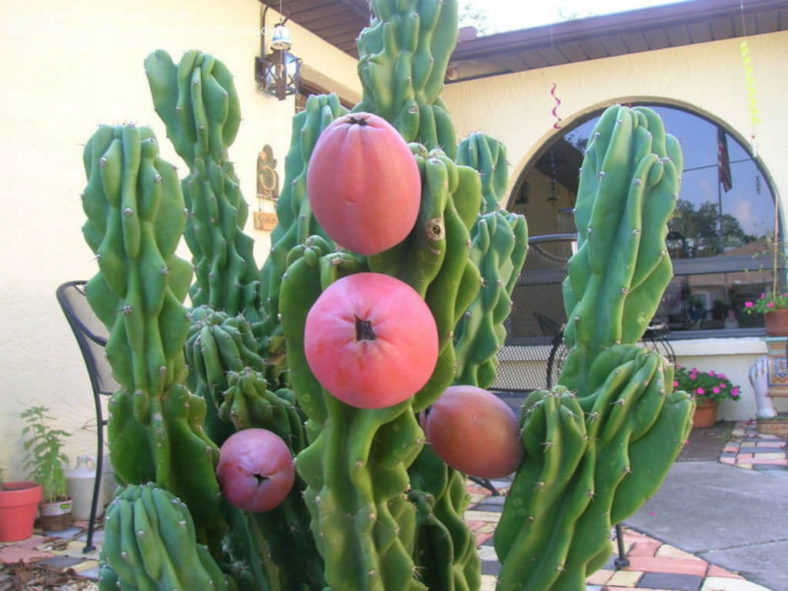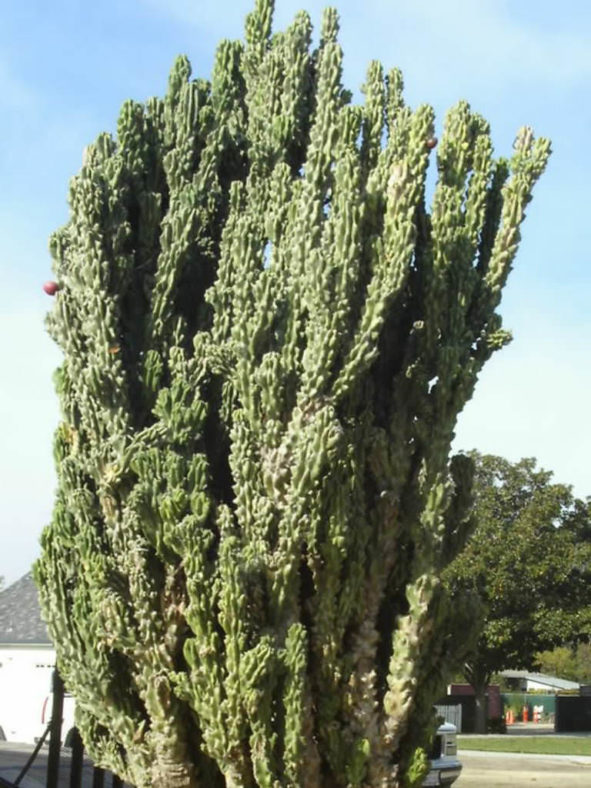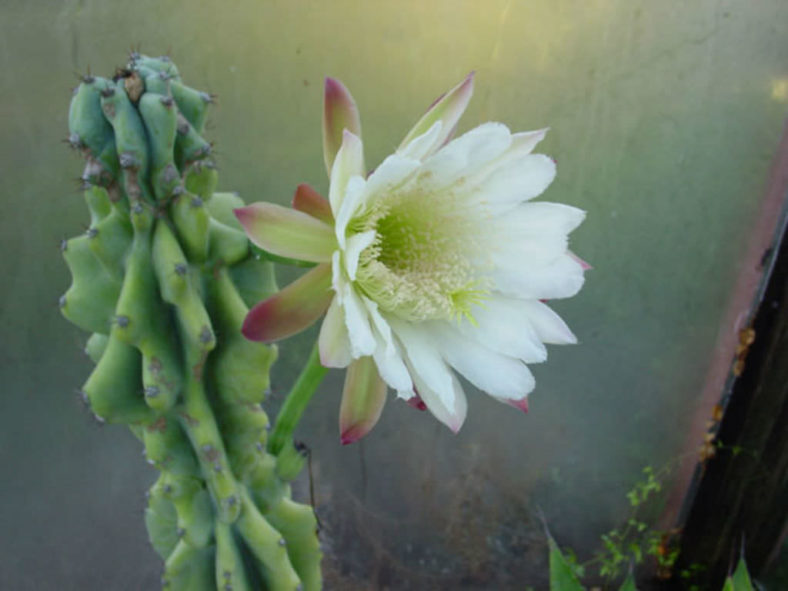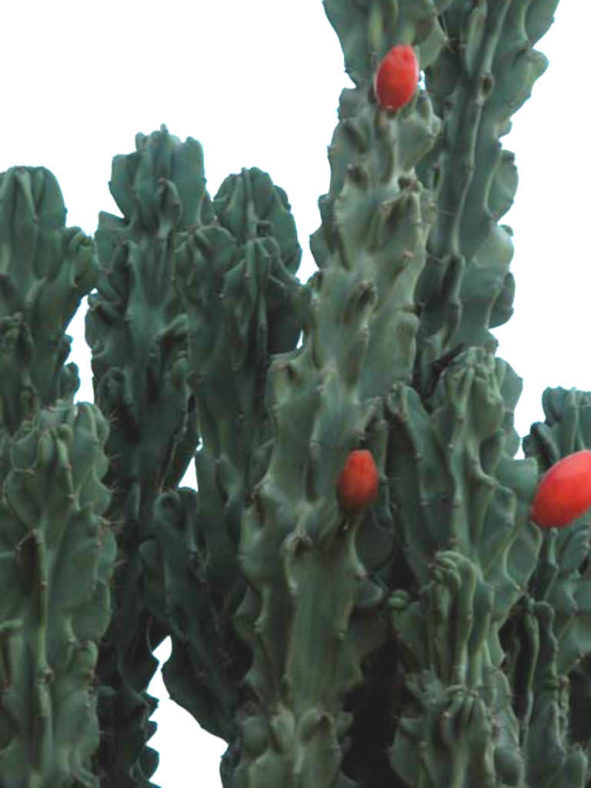Scientific Name
Cereus repandus f. monstruosus
Accepted Scientific Name
Cereus repandus (L.) Mill.
Common Names
Curiosity Plant, Monstrose Apple Cactus
Synonyms
Cactus abnormis, Cactus peruvianus f. monstrosus, Cactus peruvianus f. monstruosus, Piptanthocereus peruvianus var. monstrosus, Piptanthocereus peruvianus var. monstruosus, Cereus peruvianus f. monstrosus, Cereus peruvianus f. monstruosus, Cereus repandus f. monstrosus
Scientific Classification
Family: Cactaceae
Subfamily: Cactoideae
Tribe: Cereeae
Genus: Cereus
Etymology
The formal epithet "monstruosus (mon-stru-OH-sus)," also spelled "monstrosus," is a Latin adjective meaning "strange, preternatural, or monstrous."
Origin
This cactus is a monstrose form of Cereus repandus. It is usually selected in cultivation, but crested specimens are also found in its natural habitat in South America.
Description
Cereus repandus f. monstruosus, also known as Cereus peruvianus f. monstruosus, is a large, shrubby or tree-like cactus with many upright, branched, and irregularly ribbed stems that give it a fascinating sculptural quality. This unusual cactus can grow up to 15 feet (4.6 m) tall, usually much-branched from the base. The stems are gray-green to blue-green, spinless, or with gray spines measuring up to 2 inches (5 cm) long.
The flowers are fragrant, white with reddish tips, and appear at night in early summer. The edible fruits are spherical to egg-shaped, usually red or yellow to deep violet-red.

How to Grow and Care for Cereus repandus f. monstruosus
Light: This cactus likes full sun. It can handle partial shade but thrives in direct sunlight during the summer. A sunny window is a good spot to grow C. repandus f. monstruosus indoors. Rotate the pot quarterly every week or two to encourage balanced growth. If possible, get your cactus outdoors from spring to fall.
Soil: C. repandus f. monstruosus does not like "wet feet" and needs to be grown in well-draining soil. Use commercial soil mixes for cacti or make your own mix.
Hardiness: During the active growth period, this cactus likes warm temperatures, while in winter, it likes cooler temperatures. C. repandus f. monstruosus can withstand temperatures as low as 20 to 50 °F (-6.7 to 10 °C), USDA hardiness zones 9a to 11b.
Watering: From spring to fall, water thoroughly, but allow the soil to dry out before watering again. With the arrival of fall, gradually reduce the watering frequency. Then, during the winter, when C. repandus f. monstruosus is dormant, give it just enough water to prevent shrinking.
Fertilizing: During its growing season, this cactus likes regular fertilizing. A balanced, water-soluble fertilizer, diluted to 1/4 strength, can be added to each watering. A 10-10-10 fertilizer is ideal. Instead of making a solution of water and fertilizer, there are also dry fertilizers. Do not fertilize during the winter.
Repotting: While C. repandus f. monstruosus is young, it is recommended to repot each year in early spring. Then, once it matures, repot when your cactus is outgrowing its pot.
Propagation: Using stem cuttings is the easiest method to propagate C. repandus f. monstruosus because seed propagation is a slow process. Planting of the cuttings is best done when the cactus is actively growing. Spring and summer are the best time to sow the seeds.
Learn more at How to Grow and Care for Cereus.
Toxicity of Cereus repandus f. monstruosus
C. repandus f. monstruosus is non-toxic to humans or animals.
Links
- Back to genus Cereus
- Succupedia: Browse succulents by Scientific Name, Common Name, Genus, Family, USDA Hardiness Zone, Origin, or cacti by Genus
Photo Gallery
Click on a photo to see a larger version.


